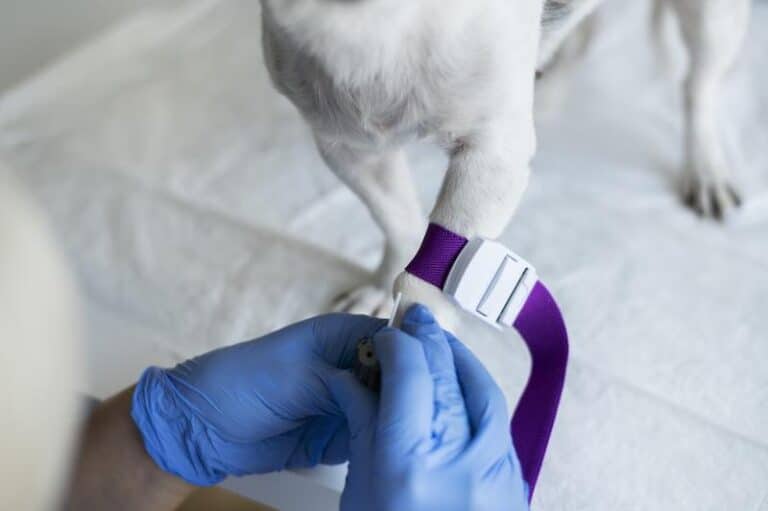4 min read
What is zoonosis?
Have you ever wondered how a simple scratch from your cat or a mosquito bite could turn into something more serious? Sounds like a scene from a thriller, doesn’t it? But this is the real-life story behind zoonosis. If you thought diseases only affected humans, you’re not alone—I was surprised when I first learned that many illnesses actually start in animals and jump over to us.
Let’s have a genuine chat about what zoonosis means and why it’s something we should all understand.

Definition of zoonosis
Think of zoonosis as a secret passageway where animals and humans share more than just a home—they share germs. These invisible travelers are diseases that naturally spread from animals to humans. It’s not just a rare occurrence; it’s happening all the time around us.
For example, when you pet your dog, eat a piece of chicken, or even drink water outdoors, you’re part of that interaction. Zoonosis is like an uninvited guest sneaking into the party whenever animals and humans get close.
How zoonosis transmission occurs
If you’re wondering what is zoonosis and how it spreads, it helps to think of it as an invisible guest moving between animals and humans. So, how does this guest actually get around? Here’s a simple breakdown of the main ways zoonosis transmission happens—without any boring science jargon.
Direct contact transmission
Have you ever had a close encounter with a wild animal—or even your own pet after a day outside? That’s direct contact transmission. Imagine shaking hands with a stranger, but instead of a friendly gesture, you’re exchanging germs. A scratch, lick, or even brushing fur can pass on these zoonotic pathogens.
Transmission through contaminated food and water
Now, if you’ve ever wondered what is zoonosis when it comes to food, here’s the answer: contaminated food and water are sneaky carriers. They’re like surprise packages filled with germs we don’t want. Eating undercooked meat or drinking untreated water can bring zoonotic diseases straight into your body.
Vector-borne transmission
Picture a mosquito landing on you on a warm summer evening. It seems harmless, but this tiny insect can be a stealthy courier for diseases jumping from animals to humans. Vectors like mosquitoes, ticks, and fleas act as middlemen in the story of zoonosis transmission.
Examples of zoonotic diseases
If you’re asking what is zoonosis, it helps to look at some familiar examples. Zoonosis might sound technical, but many of these diseases are actually household names you’ve probably heard of—or maybe even encountered.
Viral zoonoses (e.g., rabies, COVID-19)
Rabies may sound like an old horror story, but it’s very real and dangerous, mostly spreading through animal bites. Then there’s COVID-19, which shook the world recently and likely started in animals before becoming a human pandemic—a clear example of why understanding what is zoonosis matters today.
Bacterial zoonoses (e.g., tuberculosis, brucellosis)
Bacteria like tuberculosis aren’t just a human issue. Cattle can pass TB to humans, which surprised me since I always thought it was only a human disease. Brucellosis, often found in unpasteurized dairy products, is another reminder to rethink that raw cheese.
Parasitic zoonoses (e.g., toxoplasmosis, echinococcosis)
Have you heard of toxoplasmosis? It’s often linked to cats and is a parasite that can quietly infect people. Parasitic zoonoses involve tiny freeloaders living in animals but sometimes jumping to humans, often without obvious symptoms but with serious potential effects.
Some bacterial zoonotic diseases, such as anthrax or brucellosis, are caused by bacteria transmitted from animals to humans. Learn more about major bacterial diseases here.
What is a zoonotic disease?
If zoonosis is the journey, then a zoonotic disease is the unwanted passenger. It’s an illness caused by germs—viruses, bacteria, or parasites—that originally come from animals but manage to infect humans. Think of it as a bad pen pal system: animals send over harmful microbes through different routes, and humans get the consequences.
Have you ever thought about how tightly our health is linked to the animals and the environment around us? It’s all connected, and understanding zoonotic diseases means seeing health as a shared responsibility across species and ecosystems.
Common zoonotic disease transmission routes and examples
| Transmission Route | Key Characteristics | Examples | Advantages of Understanding | Potential Risks |
| Direct Contact | Physical contact with infected animals or their fluids | Rabies, Cat scratch disease | Easy to prevent with hygiene | Scratches, bites, or close pet contact |
| Contaminated Food & Water | Consumption of infected or poorly cooked food/water | Brucellosis, Salmonella | Awareness improves food safety | Foodborne illness outbreaks |
| Vector-Borne | Transmission via insects like mosquitoes or ticks | Lyme disease, Malaria | Vector control reduces risk | Harder to detect, often seasonal |
Several zoonotic diseases can lead to neurological complications. If you’re experiencing symptoms such as headaches, confusion, or muscle weakness, book a Neurology Consultation
Practical example: How understanding zoonosis helped me avoid illness
Last summer, I was hiking in a rural area and noticed several ticks on my clothes. Thanks to what I knew about vector-borne zoonoses like Lyme disease, I carefully removed them, cleaned the area, and avoided potential infection. That simple awareness made all the difference between a nasty illness and a safe, enjoyable trip.
Now, imagine how your day could change if you recognize these risks early. Little actions like washing your hands after petting animals, cooking meat properly, or using insect repellent can protect you and your loved ones.
If you want to learn more about how zoonosis affects neurological health or need guidance on testing, don’t hesitate to reach out. Understanding these connections helps us stay healthier and safer in an increasingly connected world.
Frequently Asked Questions about What is Zoonosis
What exactly causes zoonosis?
Zoonosis is caused by pathogens such as viruses, bacteria, parasites, or fungi that naturally live in animals but can infect humans. These germs can spread through direct contact, contaminated food or water, or by vectors like mosquitoes and ticks. Understanding these causes helps in preventing infection by avoiding risky exposures.
How can i protect myself from zoonotic diseases?
Simple habits make a big difference: wash your hands after touching animals, cook meat thoroughly, avoid contact with wild animals, and use insect repellent to prevent bites from mosquitoes or ticks. Being aware of the ways zoonosis spreads empowers you to take practical steps to reduce your risk.
Can pets transmit zoonotic diseases to humans?
Yes, pets can carry zoonotic pathogens, especially if they interact with wildlife or eat raw food. However, with proper hygiene, regular veterinary care, and safe pet handling, the risk is very low. It’s always good to be cautious with pet scratches or bites.
Are zoonotic diseases always severe?
Not always. Some zoonotic diseases cause mild symptoms or no symptoms at all, while others can be serious or even life-threatening. The severity depends on the specific disease, the individual’s health, and how quickly treatment is started.
Why is understanding zoonosis important for neurological health?
Certain zoonotic diseases can affect the nervous system, leading to neurological symptoms. Knowing about zoonosis helps in early diagnosis and management, especially when neurological tests are involved. This awareness can improve health outcomes by linking symptoms to potential animal exposures.

